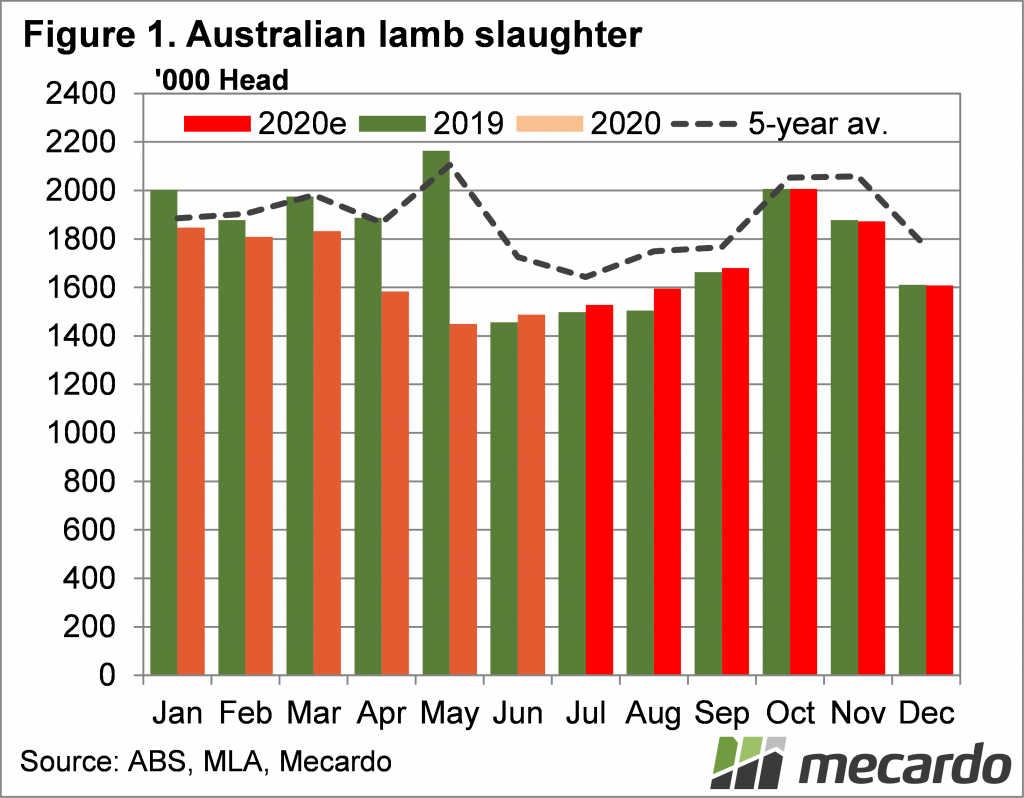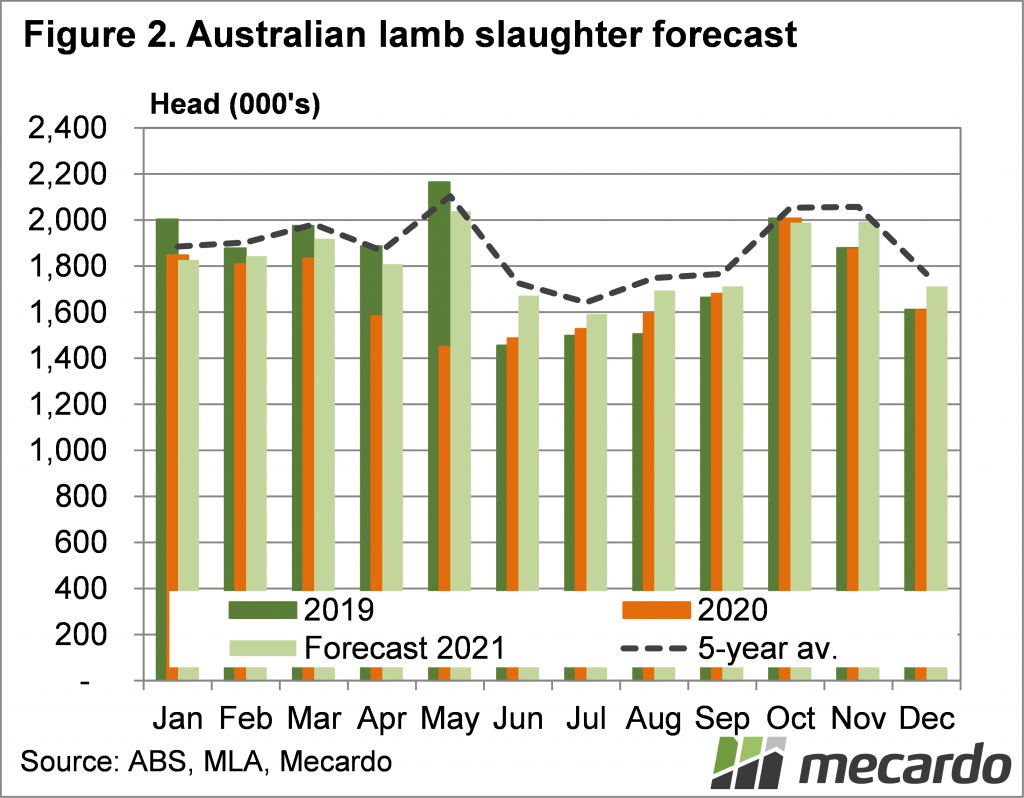We’ve taken a look at the latest Meat & Livestock Australia (MLA) sheep projections, released in September, at an annual level. It’s more useful for lamb producers, however, if we break it down to a monthly level, and it’s relatively positive.
Firstly we will see what November and December holds for lamb supply. We’ve broken down the MLA Weekly Slaughter data, and while we’ve only got two week for October, it looks like slaughter might be similar to last year.
In their latest update, MLA stripped 200,000 head out of the annual slaughter for 2020, and it means that November and December are expected to be very close to last year’s levels, in terms of supply. Figure 1 shows how 2020 has panned out so far, and what is expected to come.
In 2019 and 2020 drought in NSW resulted in extreme low slaughter from June to September. As southern lambs start to come this October, slaughter has picked up back towards the five year average, but hasn’t met it in November and December.
For 2021, MLA have forecast a 7% increase in lamb slaughter. With improved conditions in northern lamb areas we might expect the seasonal supply pattern to move back towards normal. The average seasonality would give a lamb slaughter spread as shown in figure 2.
The annual increase is mainly seen from May to August, which, under this forecast would see 12.5% higher than 2020. At the moment we are more interested in the first quarter of 2021. Figure 2 shows that if average seasonality holds true, the January to March slaughter will be 2% higher than last year.
January to March slaughter will, however, still be below 2019 levels. With sheep slaughter still expected to be very tight, there will be plenty of slaughter space for lambs.
What does it mean?
In terms of price figure 3 shows that the Eastern States Trade Lamb Indicator (ESTLI) has recovered to last year’s levels. If supply behaves as outlined above, the ESTLI should track somewhere between the levels of 2019 and 2020.
In early 2021 it seems unlikely prices will rise towards the 900¢ level, but given recent form, values above 800¢ are not out of the question.
Have any questions or comments?
Key Points
- Lamb supply is expected to track around last year’s levels in November and December.
- In 2021 lamb slaughter is forecast to increase, with most of the increase from May to September.
- The first quarter of 2021 is unlikely to see the high prices of 2020, but should remain strong.
Click on figure to expand
Click on figure to expand
Click on figure to expand
Data sources: MLA, Mecardo














